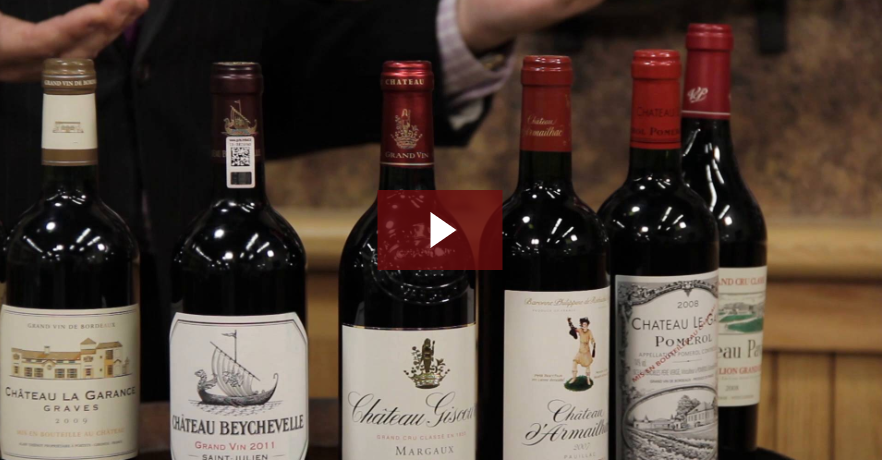4 min read
Festive Without the Fuss: 15-Minute Holiday Cocktails
The holidays are supposed to be about celebrating with people you care about and making memories that last. But...

There is a very simple breakdown of Bordeaux wines. If you look at a map of the southwest of France, you’ll see the Garonne River flows directly through the heart of Bordeaux. The region is split with the wines on the right side of the Garonne River being the right bank wines, and the wines on the left side of the Garonne River being the left bank wines.
The major factor in Bordeaux is the Gironde Estuary, shaped like an upside down “Y” by the Garonne River on the left side and the Dordogne River on the right side. That’s why they’re called banks - as in riverbanks.
Here is a key word in winemaking and wine tasting circles: terrior. Because of a location’s climate and soil similar grapes can create different flavor profiles.
Terroir is the combination of the environment's soil quality, precipitation, elevation, and weather, all working together to produce a unique grape profile.
On the right hand side, the most famous districts are Lalande de Pomerol and Saint-Emilion. A few other notoriously pricey vineyards include: Petrus, Cheval Blanc, Bordeaux Supérieur, Côtes de Bordeaux, Côtes de Francs and Côtes de Bourg.
The dominant grape varietal of the wines on the right side of the bank is merlot. There are also portions of cabernet franc, malbec, and some petit verdot.
The clay and limestone on this side of the river does wonders for the merlot grape to grow and thrive. This chalky soil means less struggle for the grapevines as they produce smooth, soft, fruit flavors.
If you are looking for a more approachable, straightforward Bordeaux without waiting for it to age, a right bank Bordeaux is a great choice.
Now, on the opposite side, the grape varietal that’s the most dominant is cabernet. This soil is more gravely and rocky with limestone which produces big, strong, forward wines and that’s where you see famous estates like Chateau Lafite Rothschild and Mouton. A few other famous vineyards of this region are: Medoc, Chateau Margaux (white wine lovers, take note), St. Julien, Paulliac, St. Estephe, Haut Medoc and Pessac Leognan.
While cabernet sauvignon is the most dominant style of wine, there are also a few vineyards that produce petit verdot, malbec, and carmenere. These wines have more tannins and tend to be more bitter than other varietals.
If you are looking for a wine that will age well and offer more complexity, a left bank Bordeaux will definitely be to your liking.
Like everything in life, a blend of two sides can produce something great. An old winemaking technique used to make Bordeaux for hundreds and hundreds of years was to blend cabernet with merlot grapes. When they didn’t have the technology that we do now, this was a great way to bring out a spectacular taste from a particular wine. If there was domination by the merlot grape or the cabernet grape, usually there is a little bit of the other grape varietal blended in.
A cabernet grape blended into merlot could make the merlot a little better, and a merlot blended into a cab could make the cab a little softer. These are just a few of the different techniques that have been used in the region.
Now that you’re an expert, head to the Bordeaux section the next time you purchase wine and look over the labels from different bottles. Try one from the left bank as well as the right bank and do a blind taste test to see which one you like best. We don’t blame you for wanting to do your “research.”